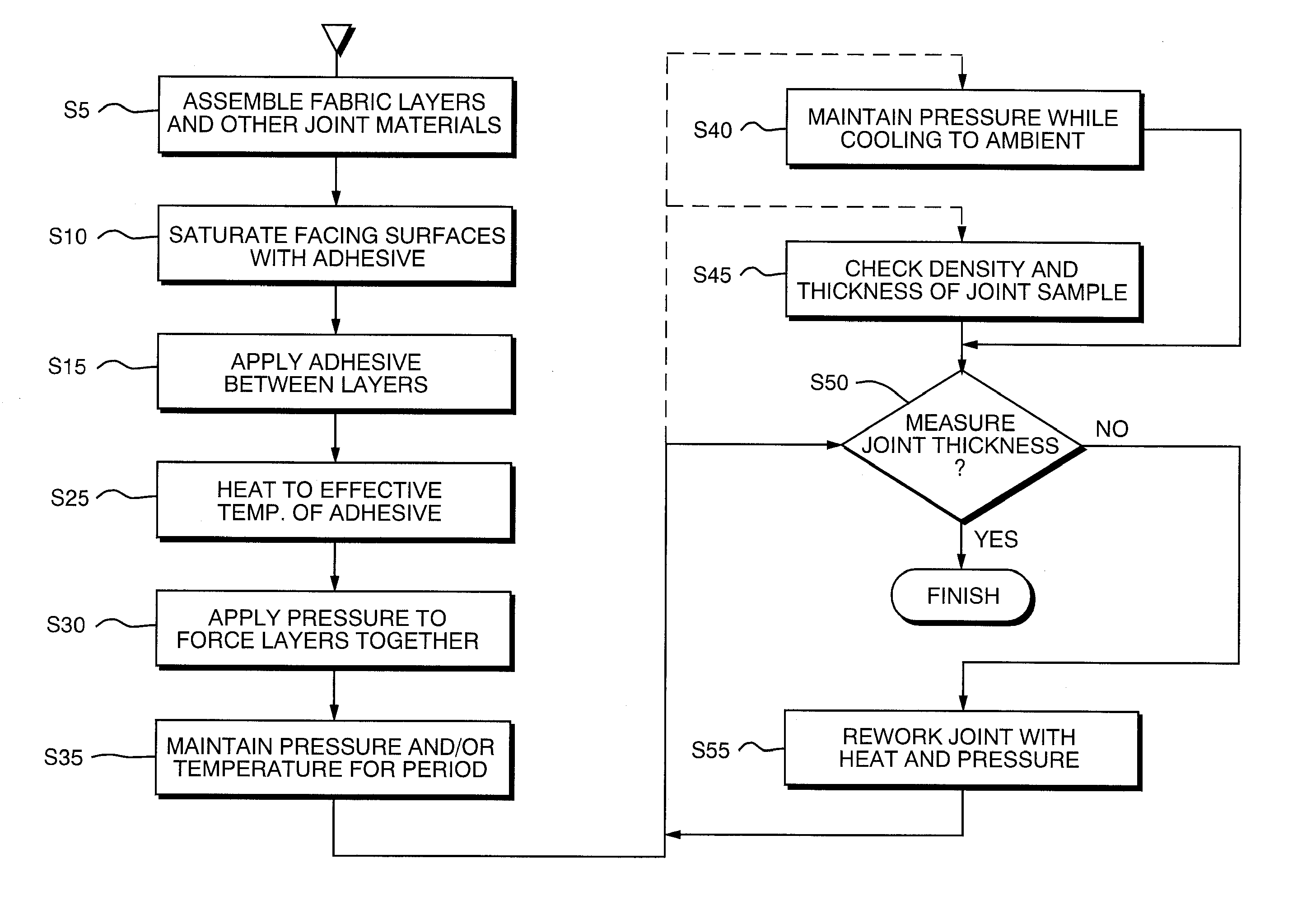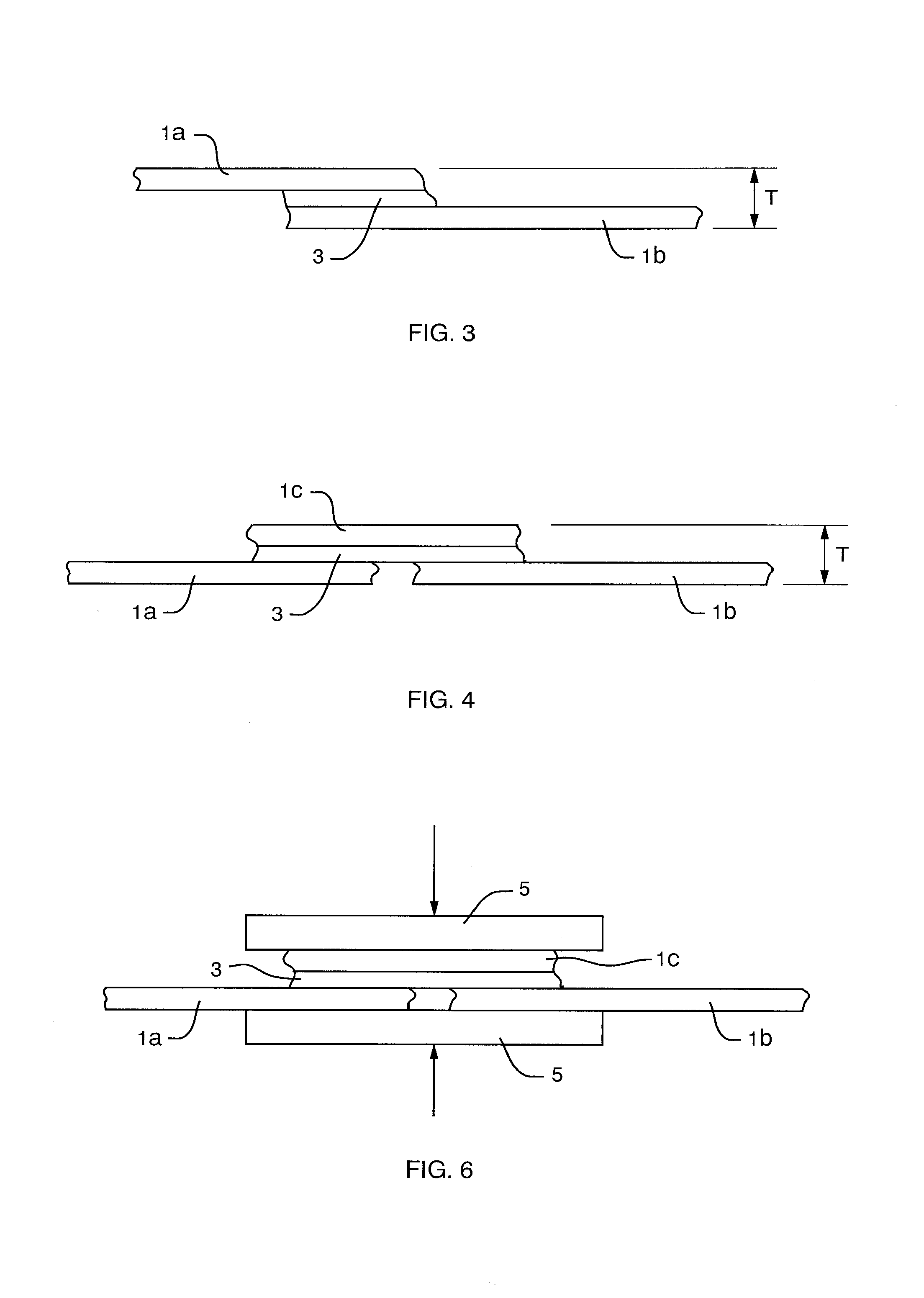Method for making adhesive fabric joints with heat and pressure by comparing actual joint parameters to pre-calculated optimal joint parameters
a fabric joint and heat and pressure technology, applied in the direction of process and machine control, mechanical control devices, instruments, etc., can solve the problem that the adhesive may penetrate the fiber bundle, and achieve good mechanical and chemical bonding, reduce the amount of relatively low modulus adhesive, and increase the joint strength
- Summary
- Abstract
- Description
- Claims
- Application Information
AI Technical Summary
Benefits of technology
Method used
Image
Examples
Embodiment Construction
[0029]The invention provides a multi-layered, structural fabric and adhesive composite that is very useful as a creep resistant joint or seam connecting two sections of fabric, in particular high strength, gas-tight fabrics as may be used in airships and other critical applications, and a method for producing it. The fabric joint and method are particularly useful for joints used in high stress conditions and / or conditions in which the joint will be exposed to temperatures up to 140° F. for a prolonged period. The invention is also particularly useful with woven fabrics including fibers having a tenacity of 10 grams / denier or higher. However, the invention can be used with a variety of different types of fabrics, including a woven, knitted, composite or other fabrics, or other applications. In short, the method of the invention can be used to join two or more fabrics of any type or composition. The invention can also be used to form joints of any desired width and / or length, or for ...
PUM
| Property | Measurement | Unit |
|---|---|---|
| pressure | aaaaa | aaaaa |
| temperatures | aaaaa | aaaaa |
| pressure | aaaaa | aaaaa |
Abstract
Description
Claims
Application Information
 Login to View More
Login to View More - R&D
- Intellectual Property
- Life Sciences
- Materials
- Tech Scout
- Unparalleled Data Quality
- Higher Quality Content
- 60% Fewer Hallucinations
Browse by: Latest US Patents, China's latest patents, Technical Efficacy Thesaurus, Application Domain, Technology Topic, Popular Technical Reports.
© 2025 PatSnap. All rights reserved.Legal|Privacy policy|Modern Slavery Act Transparency Statement|Sitemap|About US| Contact US: help@patsnap.com



